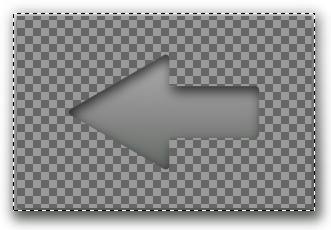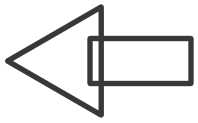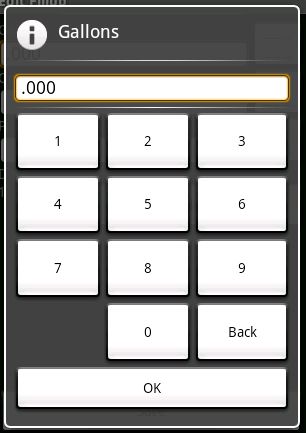Archive for January, 2009
January 31st, 2009
Assigning an icon to your Android application just takes a minute. Actually creating the icon may take a bit longer. 😛
- Create a 48×48 PNG and drop it into /res/drawable. The name of this file is usually “icon.png”.
- Open your AndroidManifest.xml.
- Right under the root “manifest” node of the XML, you should see the “application” node. Add this attribute to “application”. (The “icon” in “@drawable/icon” refers to the file name of the icon.)
android:icon="@drawable/icon"
Your app is now iconned.
To support multiple resolutions, you can create icons of different resolutions and place them in the correct folders.
- Low density
- res/drawable-ldpi
- 36×36 resolution
- Medium density
- res/drawable-mdpi
- 48×48 resolution
- High density
- res/drawable-hdpi
- 72×72 resolution
- Extra high density
- res/drawable-xhdpi
- 96×96 resolution
January 31st, 2009
A lot of people have found this site by searching for an Android button tutorial, so here it is.
- This tutorial assumes that you already have an activity and are using an XML layout.
- Open the layout XML and add the button element. Assign an ID with the “@+id” operator. The + tells Android to generate an ID for this element so that you can reference it in your Java files.
- This is an example. Your layout and text elements will probably be very different. In this example case, the ID of the button is “close”.
<Button android:id="@+id/close"
android:layout_width="fill_parent"
android:layout_height="wrap_content"
android:layout_alignParentBottom="true"
android:text="@string/title_close" />
- Open the activity class. Add a class property to hold a reference to the button.
- If you haven’t already, override the onCreate method.
@Override
protected void onCreate(Bundle savedInstanceState) {
}
- For this example, we don’t need the saved instance state, so ignore it.
- Now, in the onCreate method, attach a listener to the click event for the button. This example will call “finish()” on the activity, the Android analog of clicking the close button on a window.
protected void onCreate(Bundle savedInstanceState) {
this.setContentView(R.layout.layoutxml);
this.closeButton = (Button)this.findViewById(R.id.close);
this.closeButton.setOnClickListener(new OnClickListener() {
@Override
public void onClick(View v) {
finish();
}
});
}
- Here’s a short description of what’s happening.
- First, get the button ID. The ID created earlier in the layout, “close”, is compiled by Android and assigned a unique integer ID which is available to the application through the “R” class, which I assume is short for “Resources”.
- Request a reference to the button from the activity by calling “findViewById”. The button has to be retrieved from the activity because while an ID is unique in an activity, it is not unique among all activities.
- Assign the retrieved button to an instance variable so that if you need it later, you can easily find it without having to query for it again.
- Create a class implementing “OnClickListener” and set it as the on click listener for the button.
As UI elements go, buttons are some of the simplest. Later, I’ll write about menus and dialogs, which aren’t so easy.
January 30th, 2009
While working on a project that uses Hibernate, my team was getting a little frustrated while trying to interrogate a tree structure in our data model since all collections are mapped as java.util.HashSets. We wanted a simple function that could print the tree to the log, so I took a free hour and wrote this. It was a little more complicated than I anticipated because it had to handle situations like these.
root
|
|- child
|
|- child
root
|
|- child
|
|- child
and the infamous (to me) …
root
|
|- child
| |
| |- child
| |
| |- child
|
|- child
There’s a subtle difference. Notice that in the middle one, the line for the first child stops because there aren’t any more children, but in the last one, the line continues? I could have created some kind of 2D text buffer and gone back to draw the line, but that would be boring. Here’s what I came up with. I don’t know whether it’s pretty, but it works!
/**
* Creates a tree representation of the node
* @param node The node, which may not be null
* @return A string containing the formatted tree
*/
public static String toStringTree(Node node) {
final StringBuilder buffer = new StringBuilder();
return toStringTreeHelper(node, buffer, new LinkedList<Iterator<Node>>()).toString();
}
private static void toStringTreeDrawLines(List<Iterator<Node>> parentIterators, boolean amLast) {
StringBuilder result = new StringBuilder();
Iterator<Iterator<Node>> it = parentIterators.iterator();
while (it.hasNext()) {
Iterator<Node> anIt = it.next();
if (anIt.hasNext() || (!it.hasNext() && amLast)) {
result.append(" |");
}
else {
result.append(" ");
}
}
return result.toString();
}
private static StringBuilder toStringTreeHelper(Node node, StringBuilder buffer, List<Iterator<Node>>
parentIterators) {
if (!parentIterators.isEmpty()) {
boolean amLast = !parentIterators.get(parentIterators.size() - 1).hasNext();
buffer.append("\n");
String lines = toStringTreeDrawLines(parentIterators, amLast);
buffer.append(lines);
buffer.append("\n");
buffer.append(lines);
buffer.append("- ");
}
buffer.append(node.toString());
if (node.hasChildren()) {
Iterator<Node> it = node.getChildNodes().iterator();
parentIterators.add(it);
while (it.hasNext()) {
Node child = it.next();
toStringTreeHelper(child, buffer, parentIterators);
}
parentIterators.remove(it);
}
return buffer;
}
January 27th, 2009
I just started using Terracotta for the first time. This is how I put it in my project and configured Ant tasks to start and stop the server. The client is using Windows, so the Ant tasks work in Windows.
- Create tc-config.xml in the root of the project.
<?xml version="1.0" encoding="UTF-8"?>
<con:tc-config xmlns:con="http://www.terracotta.org/config">
<servers>
<server host="%i" name="localhost">
<dso-port>9510</dso-port>
<jmx-port>9520</jmx-port>
<data>bin/terracotta/server-data</data>
<logs>bin/terracotta/server-logs</logs>
<statistics>bin/terracotta/cluster-statistics</statistics>
</server>
<update-check>
<enabled>true</enabled>
</update-check>
</servers>
<clients>
<logs>bin/terracotta/client-logs</logs>
<statistics>bin/terracotta/client-statistics/%D</statistics>
<modules>
<module name="tim-hibernate-3.2.5" version="1.2.2"/>
<module name="tim-ehcache-1.3" version="1.2.2"/>
<module name="tim-cglib-2.1.3" version="1.2.2"/>
<module name="tim-ehcache-commons" version="1.2.2"/>
</modules>
</clients>
</con:tc-config>
- Put Terracotta into your library directory. You’ll need bin, docs, lib and schema directories and the license files.
- You don’t need the licenses for the software to work, but it’s always a good idea to include them, especially if your app is not open source 😛
- Create the Ant targets.
<target name="start.terracotta.windows">
<exec executable="cmd">
<arg value="/c"/>
<arg value="lib\terracotta-2.7.2\bin\start-tc-server.bat"/>
</exec>
</target>
<target name="stop.terracotta.windows">
<exec executable="cmd">
<arg value="/c"/>
<arg value="lib\terracotta-2.7.2\bin\stop-tc-server.bat"/>
</exec>
</target>
- Notice the backslashes there. Normally, Ant will convert forward slashes to backslashes in Windows. Since this is a command line argument, though, it doesn’t. If you’re running on both *nix and Windows, you’ll have to have two versions of the paths, one with forward and one with back slashes.
- That’s it. Run the start task to start and the stop task to stop.
January 25th, 2009
This is part 2 of this tutorial. Click here to see part 1.
- You should have two shapes in Inkscape.


- Now, you have to get these into the GIMP. The easiest way is to take a screen shot. To do that, in GIMP, go to File -> Acquire -> Screen Shot. Take two shots. Crop one to the shadowed image and the other to the black and white.
- Pick the shadowed image and add an opaque layer mask. View the Layers dialog. Right click the “Background” layer and click Add Layer Mask…
- Pick the black and white image. Select the entire image and copy it.
- Pick the shadowed image and in the layers dialog, click on the mask, to the right of the image.
- Pick the shadowed image and paste. You should see something like the image below. Pick the move tool and drag the mask around until it exactly matches the shadowed arrow.

- Now, crop the image to the arrow shape.
- Right click on the floating layer and anchor it.
- Right click on the mask layer and apply it.
- Now, just save it! Remember to save it as a PNG so that the empty parts are transparent.

I hope this helps anyone else who needs more than the standard Android icons.
More updates:
Will S. created a wireless icon.
Great tutorial, and very easy to follow, thanks.
I made a wifi icon, which can be found here:
http://digitalsquid.co.uk/files/2009/08/wifiicon.png
(you can use it if you want)
January 24th, 2009
Update
The Android developer site has some great icon guidelines now. I recommend taking a look. If you have Photoshop or another program that supports vector shapes and drop-shadows, you can see the proper settings there.
Nick says
… you can do the whole thing in Inkscape without having to go into GIMP, by using a clip mask.
Duplicate your arrow, then select both this and the inverse arrow and do Object > Clip > Set. The inverse arrow will be clipped to only show the content contained within the arrow shape.
Introduction
For my Android application, Green Mileage, I created a number input dialog box. One of the buttons in the dialog is a backspace key. Right now, it’s just a button that says, “Back”. When typing, it’s function is not immediately intuitive, so I wanted to replace it with an ImageButton. To skip to the example, scroll down. Unfortunately, none of the Android icons look quite right. I found an image of a red X and a trash can. Neither would look like a backspace, so I decided to create my own.
Since Android is open source, I assumed that Google would have created some kind of template for button images. I thought I would find a PSD, but after much searching, could not. Rather than pay $1,000 for Photoshop, I decided to use open source applications to create the image. Here’s how I did it.
Step 1: Get Inkscape and GIMP
Since this drawing will be made with vector graphics, it’s best to use a vector graphics program, so head on over to Inkscape’s web site and download it if you don’t already have it. The post-processing will be done in GIMP, so grab a copy of that too. Both have versions for Linux and Windows.
Step 2: Create the Inkscape drawing
The points on the arrow should be evenly spaced, so they shouldn’t be drawn by hand. The arrow is really just a triangle with a rectangle dangling from its side.
- This tutorial is about drawing an arrow shape, but you can use most of these steps for any icon.
- First, let’s draw the arrow. Pick the polygon tool:

- In the toolbar at the top of the screen, set these values.
- Corners: 3
- Spoke ratio: 0.5
- Rounded: 0
- Randomized: 0
- In the drawing canvas click and hold. While holding the left mouse button, press and hold the control key. That will help you draw the triangle so that the right side is vertical.

- Select the rectangle tool and draw a rectangle for the right side of the arrow. Make it overlap with the triangle. Then, select both objects. In the menu bar, click Object -> Align and Distribute. Click the “Center on horizontal axis” button.

- Now, with both objects selected, in the menu bar, click Path -> Union.

- Android menu buttons have rounded corners and gradient fills. Let’s apply those next. With the arrow selected, in the menu bar, click Object -> Fill and Stroke. Click the Stroke Style tab. Select the round join and set the width to a high enough value that the corners look rounded.
- Select the Stroke Paint tab and pick the linear gradient. The gradient will appear sideways, but we’ll fix it later. Click Duplicate to create an Android button gradient. Click Edit… Select the first stop at the top of the window, then at the bottom of the window, set its RGBA value to 666b66ff. Set the second stop to b2afb2ff.
- Select the Fill tab, create a linear gradient and set it to the one you just created for the stroke.
- Close the Fill and Stroke dialog.

- To rotate the gradient, click the gradient tool,
 .
.
- You’ll see two handles. Drag the lighter side to the top of the arrow and the darker side to the bottom. The handles will snap in to place.

- Android menu buttons also have an inner shadow. Make a copy of the arrow away from the original arrow and draw a rectangle around it. Make it a good amount larger. Align the rectangle and the arrow the same way the triangle and rectangle were aligned before. Then, select both the rectangle and the arrow and in the menu bar, select Path -> Exclusion. Set the fill of the new shape to black and the path to the same gradient as the arrow, ensuring that the gradient minimum and maximum are aligned to the arrow, not the box. Make a duplicate of the new shape and set it aside for use later.

- Select both the original and the new, inverse arrow and align them horizontally and vertically.
- Select the larger, inverse arrow and open its Fill and Stroke options, move the blur slider to the right until it looks like a shadow. Also adjust the alpha of the fill option until the arrow looks like it has an inner shadow. Don’t worry if the space outside of the arrow doesn’t look right. Then, since Android’s shadows are offset, move the inverse arrow down and to the right a bit. The arrow keys are good for this.

- Now, in the copy of the inverse arrow you made, set the stroke to white and the fill color to black.
Go to part 2
January 18th, 2009
Many of Android’s screens use attractive dividers with gradients that fade from black to white to black. Here’s how to create one of your own.
1. Create a file called “black_white_gradient.xml” in /res/drawable. Paste this into it.
<?xml version="1.0" encoding="utf-8"?>
<shape xmlns:android="http://schemas.android.com/apk/res/android"
android:shape="rectangle">
<gradient
android:startColor="#00000000"
android:centerColor="#FFFFFFFF"
android:endColor="#00000000"
android:angle="0" />
</shape>2. Create a view in the target layout and apply the gradient as the background. The “black_white_gradient” in “@drawable/black_white_gradient” refers to the file name of the shape above.
<View android:id="@+id/divider"
android:background="@drawable/black_white_gradient"
android:layout_width="fill_parent"
android:layout_height="1dp"
android:layout_below="@id/someOtherThing" />
January 18th, 2009
Recently, I created a screen with soft keys that could be used for number input. Scroll down for some source. Everything was working perfectly. Each number key called field.append(“1”), passing in the correct number. Then, a text watcher would be notified of the change and reformat the field. The problem arose when I wrote the backspace method. TextView doesn’t have a convenience method for removing characters from a field, so I used setText, passing in the number with the last character removed. Unfortunately, when I did that, the text wacher wasn’t notified of the change! Ugh… Android is very well designed, but some implementation details are really not written well. I decided it was time to look in the Android source. If the append method caused a notification to the text watcher, I would write a method that worked the same way.
Supporting number keys
This was really simple.
private class CharacterButtonListener implements
View.OnClickListener {
private TextView field;
private String character;
public CharacterButtonListener(TextView field,
String character) {
this.field = field;
this.character = character;
}
@Override
public void onClick(View v) {
this.field.append(this.character);
}
}Supporting the backspace key
Since the setText method wasn’t notifying the TextWatcher, I looked into Android’s source to find this solution. It’s ugly, but it works.
this.buttonBack.setOnClickListener(new View.OnClickListener() {
@Override
public void onClick(View v) {
TextView number = numberText;
CharSequence text = number.getText();
// This is annoyingly ugly, but is from the Android source
if (!(text instanceof Editable)) {
number.setText(text, BufferType.EDITABLE);
}
Editable editable = (Editable)number.getText();
// Now that we have the editable, edit it.
// This line is not from the Android source.
if (text.length() > 0) {
editable.delete(text.length() - 1, text.length());
}
}
});That’s it! I tried another solution, having each soft-key fire a key event in the field. It worked, but since the field is automatically formatted, it didn’t feel right. Also, Android doesn’t let the application set the position of the cursor (caret) in the text view, so if the user re-opened the number input dialog to edit the number, the cursor appeared at the left side of the field, which meant that the user had to re-position the cursor before pressing any keys, which was a pain.
January 18th, 2009
To support i18n, internationalization, Android provides a resource file, usually /res/values/strings.xml. That XML and others are compiled and each resource is assigned a unique integer ID. The IDs are placed into a resource file, “R”, as public static final variables. Here’s how to get the value of a string resource in your application.
In a layout XML
android:text="@string/resource_name"
In an Activity
this.getString(R.string.resource_name)
In an area of the program in which you have access to a Context or Application, such as a ListAdapter.
context.getString(R.string.resource_name)
application.getString(R.string.resource_name)
January 16th, 2009
July 18, 2009: Updated for Android 1.5
Recently, I created a simple dial pad style number dialog. I wanted to make the numbers as large as possible to make finger input simple. Getting the buttons to stretch evenly and not look strange turned out to be a challenge, but I eventually arrived at a solution. For the full source, scroll down.

Big buttons in Android
- The dialog uses a relative layout. It’s usually best at placing objects on the screen no matter what the resolution or orientation.
- The numbers are contained in a table layout, which is good at spacing things evenly.
- To get the numbers to stretch to the bottom of the screen, layout_above is set to the OK button, which is aligned to the bottom of the dialog. The width is fill_parent so that the buttons fill the width of the screen.
- To get each row to be the same height in HTML, you would set the height to a percent. In Android, use layout_weight. Setting the weight of each row to the same value will make them the same size.
- Also use layout_weight on each button to even out their widths.
- In version 1.5, Android started to be “smart” about how it lays out items. Since the content of the “Back” button is longer than any other button, Android will make that column in the table wider. It will do so even though the layout weights of all of the items are the same. To override that behavior, set the width of every item to 0. That way, when Android stretches the buttons out to fit in the table, every button will start from the same width, 0.
<?xml version="1.0" encoding="utf-8"?>
<!--
Layout for a number input dialog
Author: Connor Garvey
Created: Jan 11, 2009
Version 0.0.4
Since 0.0.4
-->
<RelativeLayout xmlns:android="http://schemas.android.com/apk/res/android"
android:layout_width="fill_parent"
android:layout_height="fill_parent"
android:padding="7dip">
<EditText android:id="@+id/number"
android:background="@android:drawable/editbox_background"
android:cursorVisible="false"
android:layout_width="fill_parent"
android:layout_height="wrap_content" />
<View android:id="@+id/numberSeparator0"
android:layout_width="fill_parent"
android:layout_height="4dp"
android:layout_below="@id/number" />
<View android:id="@+id/numberSeparator1"
android:background="@drawable/black_white_gradient"
android:layout_width="fill_parent"
android:layout_height="1dp"
android:layout_below="@id/numberSeparator0" />
<View android:id="@+id/numberSeparator2"
android:layout_width="fill_parent"
android:layout_height="4dp"
android:layout_below="@id/numberSeparator1" />
<Button android:id="@+id/ok"
android:layout_width="fill_parent"
android:layout_height="wrap_content"
android:text="@string/message_ok"
android:layout_alignParentBottom="true" />
<TableLayout android:id="@+id/row1"
android:layout_width="fill_parent"
android:layout_height="wrap_content"
android:layout_below="@id/numberSeparator2"
android:layout_above="@id/ok"
android:layout_weight="1">
<TableRow
android:layout_weight="1">
<Button android:id="@+id/n1"
android:layout_width="0dip"
android:layout_height="fill_parent"
android:text="1"
android:layout_weight="1" />
<Button android:id="@+id/n2"
android:layout_width="0dip"
android:layout_height="fill_parent"
android:text="2"
android:layout_weight="1" />
<Button android:id="@+id/n3"
android:layout_width="0dip"
android:layout_height="fill_parent"
android:text="3"
android:layout_weight="1" />
</TableRow>
<TableRow
android:layout_weight="1">
<Button android:id="@+id/n4"
android:layout_width="0dip"
android:layout_height="fill_parent"
android:text="4"
android:layout_weight="1" />
<Button android:id="@+id/n5"
android:layout_width="0dip"
android:layout_height="fill_parent"
android:text="5"
android:layout_weight="1" />
<Button android:id="@+id/n6"
android:layout_width="0dip"
android:layout_height="fill_parent"
android:text="6"
android:layout_weight="1" />
</TableRow>
<TableRow
android:layout_weight="1">
<Button android:id="@+id/n7"
android:layout_width="0dip"
android:layout_height="fill_parent"
android:text="7"
android:layout_weight="1" />
<Button android:id="@+id/n8"
android:layout_width="0dip"
android:layout_height="fill_parent"
android:text="8"
android:layout_weight="1" />
<Button android:id="@+id/n9"
android:layout_width="0dip"
android:layout_height="fill_parent"
android:text="9"
android:layout_weight="1" />
</TableRow>
<TableRow
android:layout_weight="1">
<TextView
android:layout_width="0dip"
android:layout_height="fill_parent"
android:layout_weight="1" />
<Button android:id="@+id/n0"
android:layout_width="0dip"
android:layout_height="fill_parent"
android:text="0"
android:layout_weight="1" />
<Button android:id="@+id/back"
android:layout_width="0dip"
android:layout_height="fill_parent"
android:text="Back"
android:layout_weight="1" />
</TableRow>
</TableLayout>
</RelativeLayout>It is difficult to get references to buttons in dialogs. You first have to inflate the dialog’s view, then you can find a button by its ID.
LayoutInflater inflater = (LayoutInflater)context.getSystemService(Context.LAYOUT_INFLATER_SERVICE);
View view = inflater.inflate(R.layout.number_input_dialog, null);
this.button0 = (Button)view.findViewById(R.id.n0);
this.button0.setOnClickListener(new NumberButtonListener(this.number, "0"));














